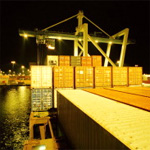Chile’s tireless expansion into foreign markets has reached new heights, racking up $21.34 billion in exports during the first nine months of this year. Yet while the country has conquered new markets and diversified its product offerings, Chilean companies – especially small and midsize enterprises – face new challenges. They must not only add greater value to their products but also compete in global and domestic markets where the playing field is not always level. Now, however, comes a proposal from Ricardo Lagos, Chile’s president, to create a free-trade agreement within the 21 nations that comprise APEC, the Asia-Pacific economic association. Its members are the most dynamic economies on the globe, generating about 70% of all growth during the past decade.

Sign up to stay informed about our latest article releases.